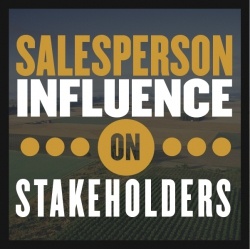 Article
Article
Plouffe, C.R., W. Bolander, J.A. Cote, and B. Hochstein. “Does the Customer Matter Most? Exploring Strategic Frontline Employees’ Influence of Customers, the Internal Business Team, and External Business Partners.” Journal of Marketing 80, 2 (2016): 106-123.
Reviewer
Masi Keshavarz, Research Project Manager
Summary
Modern frontline employees (salespeople) are often required to manage relationships with different stakeholders to effectively provide sale offerings to their customers. Three key stakeholders that frontline employees directly work with include their customers, people within their own organizations (internal business team) and people in external organizations (external business partners). Historically, many marketers have assumed customers were the most important drivers of employees’ performance. The impacts of internal business teams and external business partners on frontline employees’ performance have been understudied in marketing research.
An example from my own experience is from the sourcing and procurement organization of a food and agricultural corporation. The team’s goal was sourcing of high quality products at the best price possible, where the performance was assessed by the amount of savings. They had relationships with suppliers’ salespeople, as well as ongoing collaboration with internal stakeholders, including the market intelligence and data analytics team, of which I was a part. Our team provided market research, industry analysis, product cost structure, internal and external data analysis, market major players, supplier financial analyses, etc. The performance of the sourcing team was directly influenced by the information we provided to them. For example, periodic reports of commodity prices and their trends could help the team to ask suppliers for a discount in their prices, in the case of drop in price of a certain commodity. Although this example is in the purchasing area, it is still relevant to this topic.

The study looked at how three types of tactics used by salespeople—non-coercive, soft-coercive, and hard-coercive—affected the three groups of constituents: customers, internal business partners, and external business partners. The results demonstrated that two tactics—pressure and inspirational—positively impacted perceptions of all three stakeholders. But the remaining tactics have different effects on frontline employees’ performance across stakeholders. It was also noted that the influence of internal team and external partners on frontline employees’ performance were greater than that of customers, though it varied between firms.
What this means for food and agribusinesses
Salespeople and managers in food and agribusinesses should explore and tailor a set of influence tactics for their own business objective outcomes. They need to have the following considerations:
First, frontline employees and managers in the food and agribusiness industry should be aware of various effects of tactics on frontline employees’ performance across stakeholders and firms. This means that there is not just one solution for frontline employees to keep relationships with stakeholders in order to increase their performance. Therefore, frontline employees and their managers should be cautious of the training programs and best practices offered them by trainers and consultants. Many of these programs often simplify the influence process in which a certain outcome is obtained by applying a certain tactic. It would be best for them to seek custom programs fitting their unique business objectives and activities.
Second, some tactics that seem correct conceptually might not necessarily be the most effective drivers of actual performance. For example, managers might believe that because a tactic, such as “rational persuasion,” is conceptually correct, influencing people through logical suggestions will have a positive impact on frontline employees’ performance. Also, frontline employees themselves might feel more comfortable and confident using this type of tactic. But the study findings revealed that this tactic does not have any positive impact on performance across all stakeholders. As it appears, there is a discrepancy here that can be explained by understanding that different decisions are made through different cognitive processes, such as dual-route information processing and central-route processing.
Moreover, agribusiness managers shouldn’t assume that customers are the sole stakeholders of marketing employees. They need to understand today’s business relationships are much more complex. In regards to the marketing employees (i.e., frontline employees) who manage the customer relationship, the other stakeholders, such as internal teams and external partners, have significant impact on the frontline employees’ performance. Therefore, the authors agree with the recommendations of Lassk et al. (2012) to “implement frontline employee training that acknowledges the importance of all salient stakeholder types across the entire relationship portfolio” (Plouffe et al., 2016 p119). It is also important that managers coach and encourage frontline employees to consider the relationship with these two noncustomer stakeholders as critical as their customers to improve performance.




